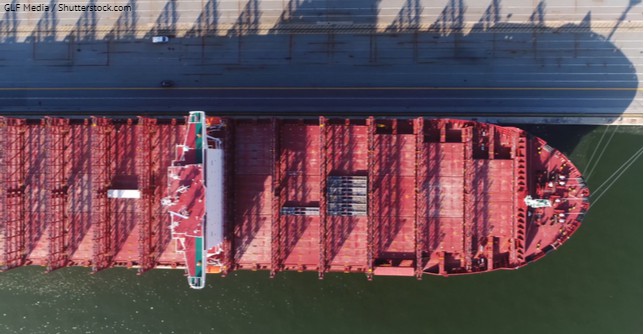Slow growth in intra-Asia volumes seen as a harbinger for long-distance container trades in peak season.
BIMCO has “low expectations for demand growth in 2019” for the container shipping industry, says Peter Sand, the chief shipping analyst at the Copenhagen-based trade organization.
In a report released this week, he said he takes a protectionist’s approach to global trade.
He also said that while U.S. buyers increased their imports in the last months of 2018 in an effort to avoid threatened tariffs, imports fell in the first two months of 2019 as inventories were full due to the frontloading.
“The inventory-sales ratio increased to 1.47 in December 2018 from 1.43 in November and grew to 1.48 in February. This rising ratio indicates that inventories are growing faster than sales, reducing import prospects for containerized goods on the transpacific trade lane,” Sand said.
The peak season for container shipping is July to September for the Far East to Europe and North America trade lanes, said Sand, and “to get an early indication of how well the peak season on the long hauls in 2019 will perform, we watch the intra-Asian trades closely.”
He said BIMCO has “started to see some weakness. This is the downside risk for which we are watching out.
“Intra-Asian volumes tend to peak before the long-haul volumes do, as many of the semi-finished goods are in transit to final production stages just before the peak export season out of Asia starts in July,” he said.
Global container volumes in the first quarter of 2019 were just 91,000 TEUs higher than they were in the same 2018 period, said Sand, and that 0.5% growth is “massively below those of earlier years, where the global demand in Q1 2017 grew by 6.6% and in Q1 2018 by 3.6%.”
The low rate of growth “is a critical issue for an industry used to much higher growth — double digits for many of the years between 1999 and 2007, growing by an average of 10.2%, and coming down to an average of 4.3% between 2012 and 2018,” he added.
Growth is not uniform. Exports from the Far East in the first quarter were up by just 64,000 TEUs (0.5%). But Sand said growth in trade from the Far East to Europe and North America were partially offset by lower volumes to the Indian Subcontinent and Middle East, and South and Central America from the Far East.
He said volumes on the intra-Asian trades fell during the first quarter by 0.2%.
“The drop is a sign of weakening volumes in the supply chains and, ultimately, the result of fewer new export orders received by Asian manufacturers in recent months — something that will impact outbound volumes in the coming months,” said Sand. “Fewer export orders mean less transport of semi-finished goods between the Asian countries. So the freight rates on intra-Asian routes going from Shanghai to Japan, Korea and Singapore are increasingly relevant to keep an eye on, to spot the knock-on effect on the regional semi-finished goods market — and they are mostly moving sideways or slowly in decline.”
Sand said 53 containerships have been ordered in 2019, with 14 having a capacity of between 11,000 and 15,000 TEUs and 39 with cargo capacity between 653 and 2,500 TEUs.
“Our forecast is now for the fleet to grow by 3.1% in 2019,” said Sand. “This would be the second-lowest fleet growth on record.”
Sand said, “At the beginning of the year, BIMCO expected a small amount of capacity to be demolished. That amount is now predicted to double — to 200,000 TEU — on the back of much weaker than expected freight rates across the board for the year so far.”
He noted, “Only smaller ships will leave the fleet, as the larger ships are still comparatively new. Even though the market may stay unprofitable, sentiment, more than freight rates, has improved enough to disincentivize owners from scrapping. Even a sluggish demand outlook will not cause massive scrapping.”











